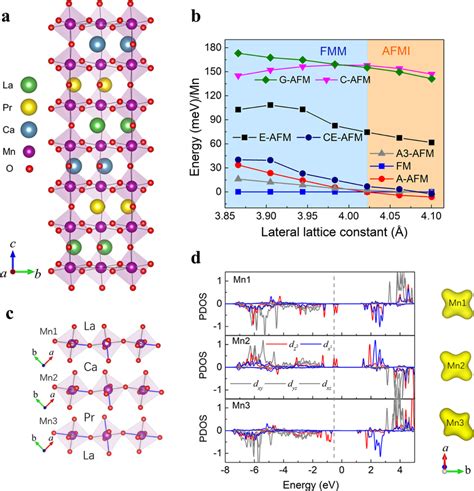Understanding Density Functional Theory: A Guide

Density Functional Theory (DFT) is a powerful and versatile tool in the field of quantum mechanics, offering a computationally efficient approach to understand and predict the electronic structure of atoms, molecules, and materials. With its ability to capture complex quantum phenomena, DFT has revolutionized the study of matter and become an indispensable technique for researchers across various disciplines. In this comprehensive guide, we delve into the intricacies of DFT, exploring its principles, applications, and impact on modern scientific inquiry.
Historical Evolution of Density Functional Theory

The foundations of DFT can be traced back to the early 20th century, when quantum mechanics was in its infancy. The theory emerged as a response to the challenges posed by the complex nature of many-electron systems. In 1927, physicist Walter Heitler and chemist Fritz London pioneered the use of quantum mechanics to describe the bonding in molecular hydrogen, laying the groundwork for understanding chemical bonds. However, as the study of larger molecules and materials progressed, the computational demands became increasingly daunting.
It was in the 1960s that physicist Pierre Hohenberg and his colleague Walter Kohn made a groundbreaking discovery. They proved that the electronic properties of a many-electron system could be determined solely from the electron density, a concept that later became known as the Hohenberg-Kohn theorem. This theorem provided the theoretical basis for DFT, offering a radical departure from traditional wavefunction-based methods.
Kohn and his collaborator Lu Jeu Sham further developed DFT by introducing the Kohn-Sham equations, which allowed for the calculation of the electron density and energy of a system. This approach, published in 1965, provided a practical framework for DFT calculations, making it a viable tool for researchers. Over the following decades, DFT underwent rapid development and refinement, with numerous approximations and functional forms being proposed to improve its accuracy and applicability.
The Principles Behind Density Functional Theory

At its core, DFT is based on the concept that the electronic properties of a system can be described entirely by the electron density, which is a function of position in space. This electron density, denoted as ρ®, represents the probability of finding an electron at a particular point in space. By focusing on this density rather than the complex wavefunctions of individual electrons, DFT simplifies the calculation of electronic properties significantly.
The key idea behind DFT is to find an energy functional, denoted as E[ρ], which depends only on the electron density. This functional can be thought of as a mathematical mapping that takes the electron density as its input and returns the total energy of the system as its output. The Hohenberg-Kohn theorem guarantees the existence of such a functional, ensuring that the energy of a system can be uniquely determined from its electron density.
The Kohn-Sham equations, which are at the heart of DFT calculations, further simplify the problem by introducing a set of fictitious non-interacting particles, known as Kohn-Sham orbitals. These orbitals are used to calculate the electron density, which in turn determines the energy of the system. This approach, known as the Kohn-Sham scheme, allows for the use of well-established quantum mechanical techniques, such as the Hartree-Fock method, to solve for the Kohn-Sham orbitals.
Applications of Density Functional Theory
DFT has found widespread applications across various fields of science and engineering, thanks to its ability to provide accurate predictions at a fraction of the computational cost compared to traditional methods. Here are some key areas where DFT has made significant contributions:
- Chemical Bonding and Reactivity: DFT has revolutionized the study of chemical bonding, allowing researchers to understand and predict the behavior of molecules and materials. It has been instrumental in predicting reaction mechanisms, optimizing reaction conditions, and designing new materials with desired properties.
- Materials Science: In the field of materials science, DFT has become an indispensable tool for studying the electronic, optical, and magnetic properties of materials. It enables the prediction of band structures, electronic band gaps, and the response of materials to external stimuli, such as electric fields or light.
- Nanotechnology: With the advent of nanotechnology, DFT has played a crucial role in understanding the behavior of nanostructures, such as quantum dots and nanowires. It has helped researchers design and optimize nanomaterials with specific properties, paving the way for applications in electronics, energy storage, and biomedical devices.
- Biological Systems: DFT has been applied to study biological molecules and systems, providing insights into the electronic structure of proteins, DNA, and other biomolecules. It has contributed to our understanding of enzymatic reactions, drug-protein interactions, and the electronic properties of biological membranes.
- Environmental Science: DFT has been used to study the electronic structure of pollutants and their interactions with various materials, aiding in the development of environmentally friendly technologies. It has also been applied to understand the electronic properties of materials used in renewable energy, such as solar cells and batteries.
The Future of Density Functional Theory
While DFT has achieved remarkable success and become a workhorse of computational chemistry and materials science, there are still challenges and areas for improvement. One of the primary limitations of DFT is its reliance on approximations for the exchange-correlation functional, which can lead to inaccuracies in certain situations. Researchers are continually working on developing more accurate and robust functional forms to enhance the predictive power of DFT.
Another area of active research is the extension of DFT to include the effects of electron correlation beyond the mean-field approximation. While DFT provides a computationally efficient approach, it may not capture certain subtle electronic effects accurately. Methods such as hybrid functionals and double hybrid functionals are being explored to improve the accuracy of DFT calculations.
Looking ahead, the integration of DFT with machine learning and artificial intelligence techniques holds great promise. By combining the power of DFT with the ability of machine learning to identify patterns and make predictions, researchers aim to develop more efficient and accurate computational models. This synergy between DFT and machine learning has the potential to revolutionize the way we study and design materials, accelerating the discovery of new materials with tailored properties.
Conclusion

Density Functional Theory has emerged as a cornerstone of modern quantum mechanics, offering a powerful and efficient approach to understand the electronic structure of matter. From its humble beginnings in the mid-20th century, DFT has grown into a versatile and indispensable tool, impacting fields as diverse as chemistry, materials science, nanotechnology, and biology. While challenges remain, the continuous development and refinement of DFT ensure its relevance and importance in the years to come. As we continue to explore the quantum world, DFT will undoubtedly play a pivotal role in unlocking the mysteries of matter and driving scientific progress.



